I was lucky enough to come across the Kickstarter for indy anthology Imaginary Drugs earlier this year. I received my PDF copy a few months ago and it was an entertaining, eclectic piece of comic book entertainment with a wide variety of talented writers, artists, colorists and letterers. IDW even ended up picking it up and is releasing an expanded version of the softcover in January. Here’s the solicit for that:
I wanted to learn more about the trip of Imaginary Drugs from its beginning to today, so I spoke to one of the men behind it, Michael McDermott. I talked to him about everything from his beginning with the Small Press Commandos community, the creation of Imaginary Drugs, Kickstarter success and the upcoming release from IDW. Enjoy this interview with writer and editor Michael McDermott.
How did you get involved in FUBAR?
YEARS ago, when ComicSpace was a new thing, I had worked on a pitch for an ongoing 2 story split book called Banned in Japan. NC Winters gave us an amazing cover, Felipe Cuhna handled art duties on half the book titled ‘The Bombed Squad’ and this dude Jeff McComsey handled the art on the other half called “Murder Culture” (I actually repurposed the concept for an Imaginary Drugs short with the same name). Pitched around, heard no word, found McComsey a while later via social media, saw his call for short stories for Volume 2 of this FUBAR thing he was assembling and the rest is history. FUBAR was really a huge blueprint for me when it came to putting together Imaginary Drugs.

Art by Steve Becker.
Do you know how the Small Press Commandos came about?
I THINK it was started by the relentless core group of indie creators that had put out the first FUBAR Volume: European Theatre of The Damned, and were then working with 215 Ink. I think I stumbled onto it around the time I started working with FUBAR and perhaps it’s best its true origins lie slightly shrouded in mystery. It was a tremendous resource at the time for someone who was interested in getting their work into the hands of an eager audience. A lot of my peers in the group have really blossomed over the last few years and it’s exciting to see the likes of Jason Copland and Christopher Peterson go on to Marvel or Dark Horse gigs. Or to watch the terrifying Kickstarter success of FUBAR: Mother Russia campaign.
How does such a close-knit group help you market each other’s comics?
It’s nice because when you promote someone else’s work in the group, you’re usually literally endorsing the product they’ve put together and not just recycling some spammy PR release. We’ve probably watched the project grow through art or pitch postings so we’re really pulling for a lot of what comes out of the community. Rising tide lifts all ships and all. Seeing what some of our fellow Commandos are capable of and achieving also fuels the fire under our own asses as creators to KEEP WORKING as well, I’d think.
Do you think that community played a part in getting everyone, including artists, to work for royalties instead of upfront pay?
What do you think of Kickstarter as not just a fundraiser but a marketing tactic?
Well, I can definitely give you a more informed opinion in a month or so once our preorders close on ID, but I can’t see how it hurts! It’s empowering having this independent stable of interested consumers willing to financially back your creative endeavors. No matter what, throughout the entire process of bringing Imaginary Drugs to fictional life, I’ve kept my loyalty firmly focused on our Kickstarter backers. Treat them right, don’t suck, and you have a fanbase of rabid supporters that you want to create for. Seriously, my dealings with most backers has been purely positive and inspiring when need be. An anthology like this is a lot of work, and it’s awesome to hear from people who appreciate the effort and the fruits of the labor.
$10 is a low price point for a 64-page comic on Kickstarter, let alone the 160 page one it turned into. How did you decide on that price point?
Well, originally we were shooting for a 56-page anthology. As we added stretch goals and the beast grew, it didn’t dawn on me to sell out the $10 reward tier and raise the price point until much later in the campaign. So… bad math 101! Once we got the IDW publishing deal in place, it took a lot of the stress off of us mass distribution wise and allowed us to focus solely on making the Kickstarter version of the book and rewards as ass-kicking as humanly possible.
How did ID land at IDW?
Why do you think anthologies on Kickstarter have been so successful, both in raising money and getting deals at publishers like IDW?
As a reader, I like the idea of getting a finite product. Creators aren’t going to ask me to invest in their 80-issue epic, aren’t going to ask me to blindly trust their ability to have it all make sense by issue #25. Nope, it’s get on the stage, entertain me and leave me wanting more. An anthology is a much safer way for a reader to test the waters on talent they may be unfamiliar with or unsure of. As for publishers, again, it’s probably a safer way to test the waters with newer talent and see if there’s an audience response to any particular work. Pure speculation on my end however. I think for Imaginary Drugs it was all in the title. How could you not want that TITLE alone on your publishing roster?
How did you decide on that title?
By telling all the crazy stories in Imaginary Drugs, you’ve already built a big, interesting world. Do you want to tell more stories in it, either with another anthology or as a series about some of the characters?
How is Kickstarter fulfillment going?
I think it’s going well but the ultimate opinion lies with our backers. As you mentioned, we wound up with our Kicksrtarter/self published version of Imaginary Drugs coming in at 160 pages. The vast, vast majority of backers made out like bandits, because well, they’re getting a 160-page full size tpb shipped for $10. That’s an absolutely insane deal even if you think the work sucks. We’ve got about 400 of our 650 rewards shipped and I’m regularly getting the rest out. I swear to god, out of those 400 I have not had one single complaint about product, shipping (every comic bubble wrapped, taped, boxed, stuffed… I’m anal) or damages. We blew our April estimated delivery date… adding 100 + pages of comics that needed to be created in order to make it into the book knocked us off target a bit… but I’m pretty damn proud of what we’ve been able to deliver to our backers. We’re not some low level throw-away-amateur Kickstarter hour over here. The creators I have lined up, Jeff, Christine, Jonathan, K Michael, Jeff McComsey, Shawn Aldridge, Christopher Peterson, Stacy Lee, Alexis Zirrit, Eric Esquivel, Chris Lewis, Eryk Donovan, Aluisio Santos, Mark Bertolini, Rafer Roberts, Will Perkins, Magnus Aspli, Fabian Rangel Jr., Ryan Cody and MORE have been grinding out their own indie comics the last few years. I’ve watched them. They’ve earned their spots in Imaginary Drugs and they helped make our book and our deal a reality. They are my Spiritual Warriors (Jodo… Stand UP!).
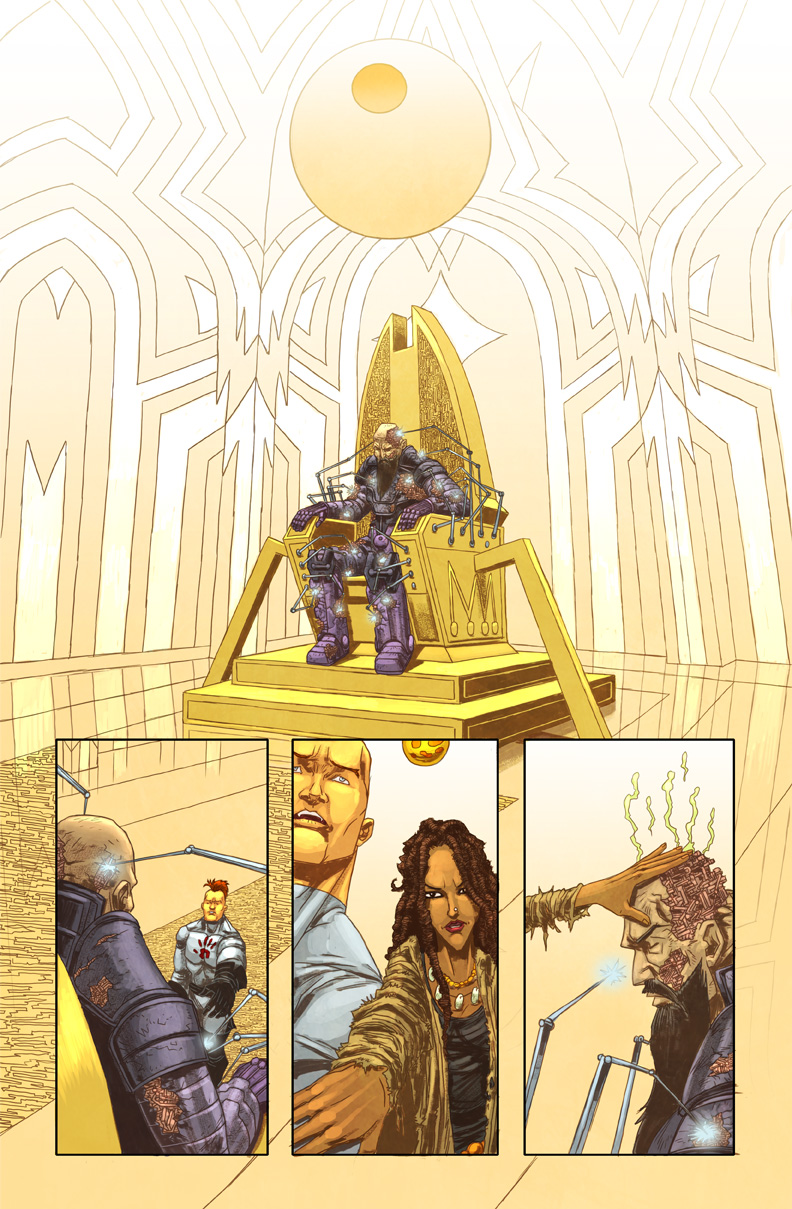
“Old Blood/New Star.” Story by Michael McDermott. Art by JM Ringuet.
What did you learn, about the industry and yourself, as you’ve been in the process of getting a graphic novel published by a Big Five publisher?
Imaginary Drugs is now available for pre-order, and will come out in January. I’m high on it, and you should be, too.



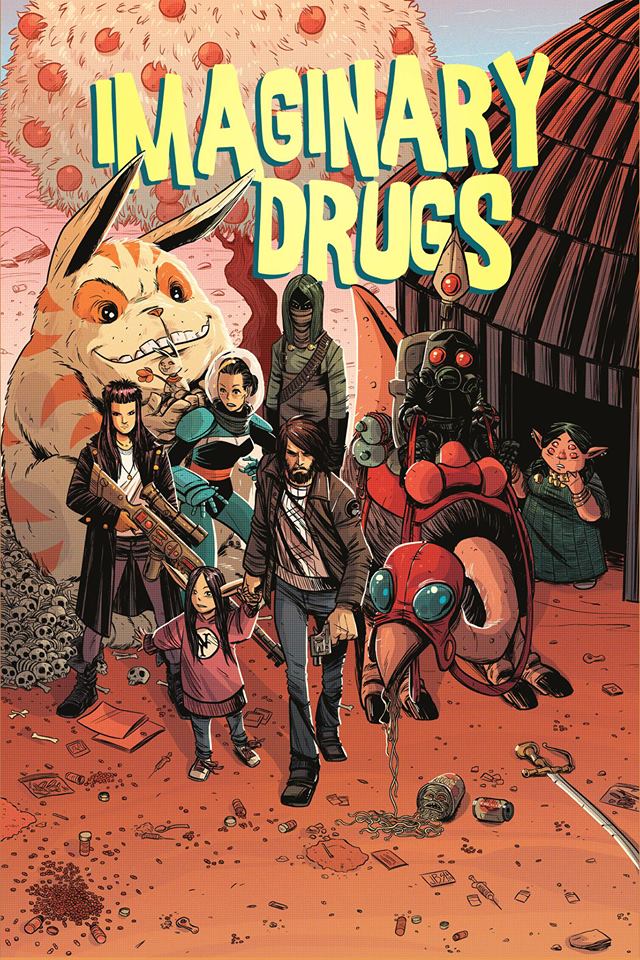
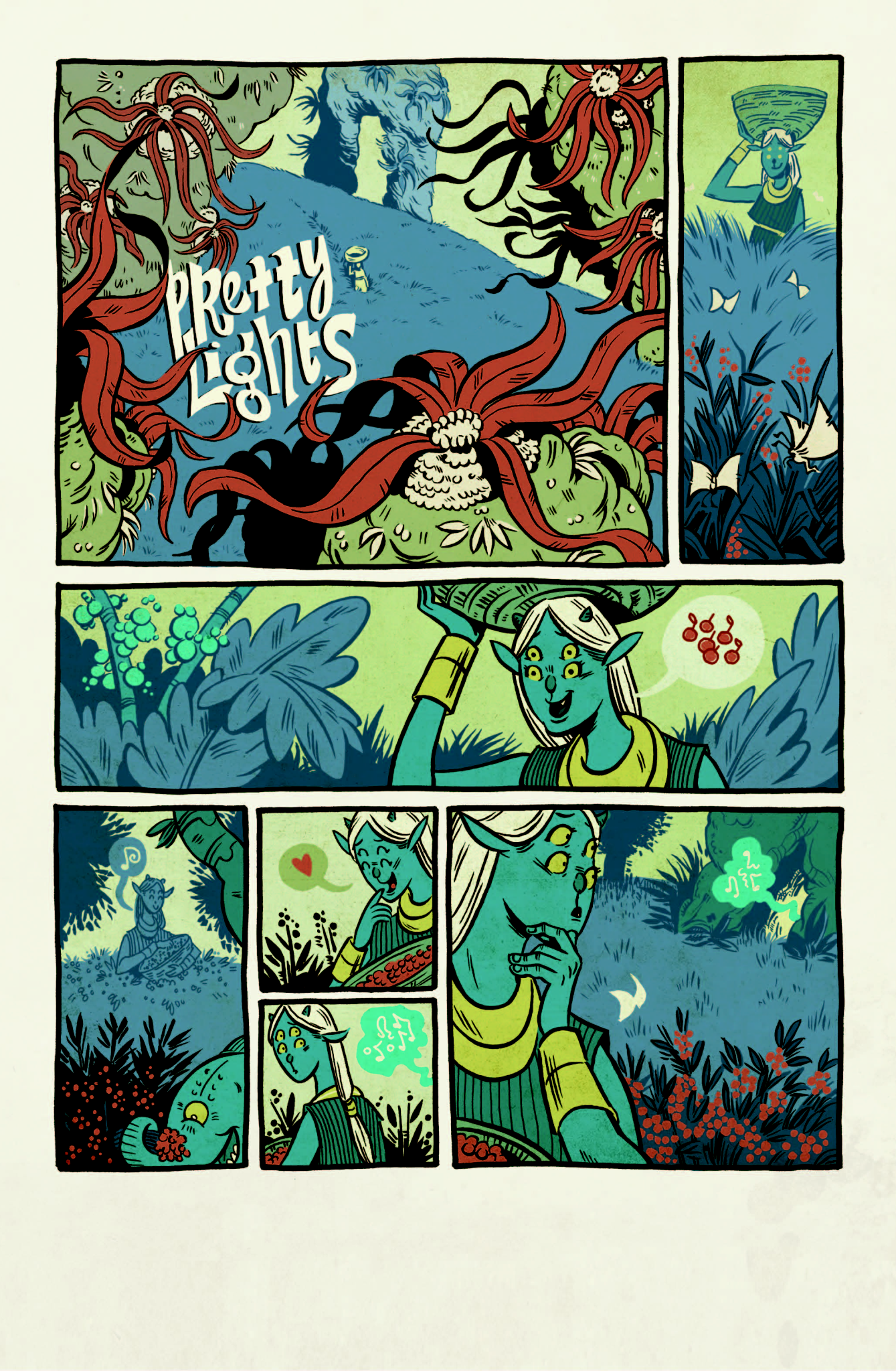
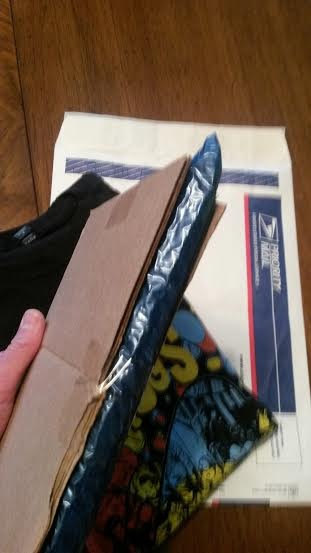
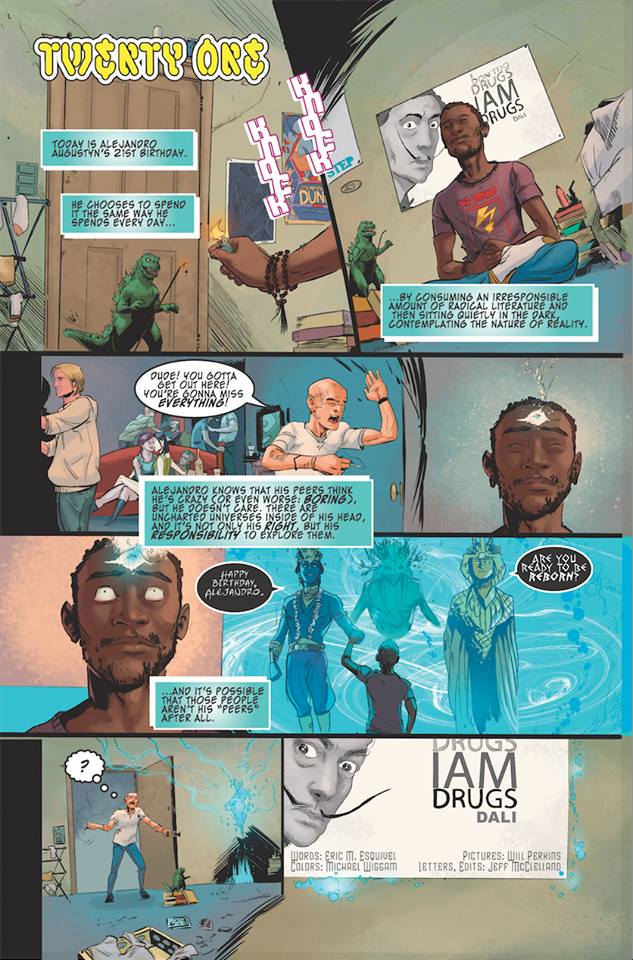
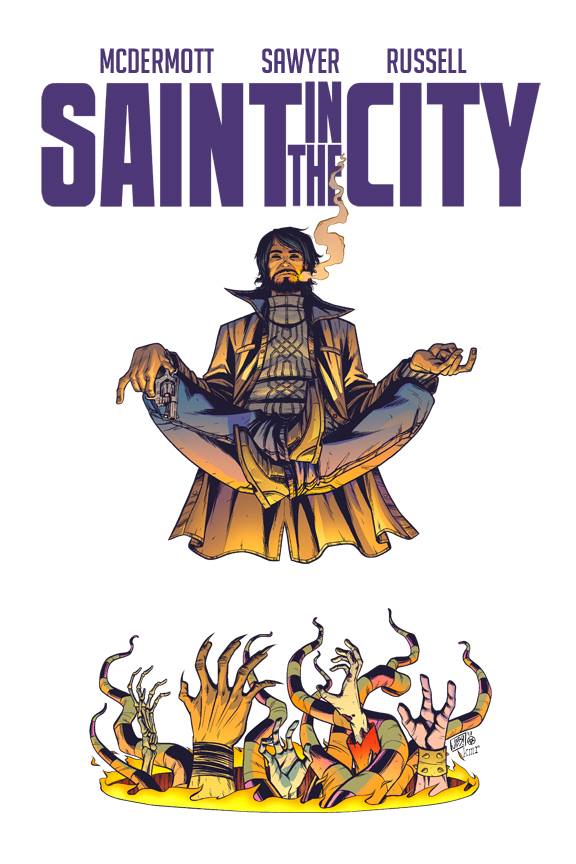
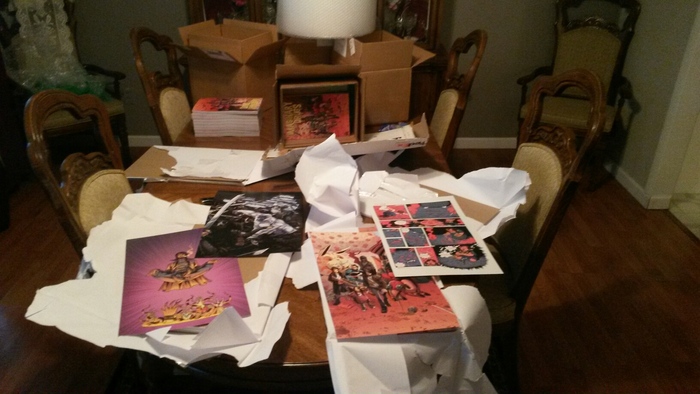
And anybody that’d like to hit me with feedback on the book or the article can hit me up at:
[email protected]